Cookbook #233: The Vegetarian Epicure Book Two, Anna Thomas, Alfred A. Knopf, NY, 1978.
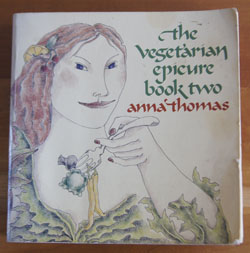 The Vegetarian Epicure Book Two is pleasantly illustrated and is printed on solid, rough paper – such a good tactile touch. Anna Thomas is a friendly author, and the recipes straightforward. I bought this cookbook for myself, and I’m sure that I leafed through it at the store and was intrigued by the look of the book and the variety of recipes.
The Vegetarian Epicure Book Two is pleasantly illustrated and is printed on solid, rough paper – such a good tactile touch. Anna Thomas is a friendly author, and the recipes straightforward. I bought this cookbook for myself, and I’m sure that I leafed through it at the store and was intrigued by the look of the book and the variety of recipes.
Who is Anna Thomas? I find that she is alive and kicking, and has a website and a wikipedia entry. She is the author of five books, and my book, The Vegetarian Epicure Book Two, is still being printed, and in the same paperback format. This is pretty amazing. She is a popular food writer, and contributes to several periodicals. But perhaps more interesting than that, she studied filmmaking in school, and is a screenwriter and producer! The Haunting of M, El Norte, and Mi Familia are among the films she produced.
I decide this book needs more than a casual glance. So I dig into Anna Thomas’ introduction. “Book Two is not just a continuation of the first volume but an exploration of rich new lodes. The first book came out of my own past . . . this second volume is the result of new adventures.” Namely, “Work and whim took me through large parts of Europe – Portugal, Spain, Italy, France, Greece, Austria, Hungary, Poland – as well as to England . . . the Middle East . . . Mexico.” She looked for vegetarian dishes: “Many people, I found, were curious how a vegetarian could survive, and even eat splendidly, while traveling abroad. The answer is, easily. Nearly everywhere I went, I discovered that the emphasis on meat was much less overwhelming than it is here in the United States.”
This book is not for vegetarians only. “It is for anyone who can enjoy foods like fettucine alfredo, pea soup with dumplings, fondue, pimiento and olive quiche, tomatoes filled with hearts of palm, Liptauer cheese, wild mushroom souffle, Caesar salad, and frozen strawberry mousse.” I am in that group!
And I agree with Anna Thomas in this next: “The most important thing about food, after all, is enjoyment, and what a grand thing it is that eating is such a renewable pleasure: We always do get hungry again! We all eat, and it would be a sad waste of opportunity to eat badly. It’s true that the meals we consume in a lifetime number in the tens of thousands, but the number is finite; each one should be as nice as it can be, for it can never be regained.”
Yes, we all get hungry again! Anna Thomas has made me smile. I turn the next pages ready for a little adventure, a little more acceptance of a dinner without meat.
A menu section precedes the recipes. This is really helpful for me. Sure, I have a vegetarian main dish or two in my repertoire, but a whole meal for guests? I would need some help.
“Breads” is the first recipe chapter. Well if you know me, you know that bread is one of my favorite foods. Her breads vary from whole wheat to white, yeast to quick breads. I’ve tried An Easy Herb Bread on page 35.This is a yeast bread, but can be ready in two hours. The herbs are basil, oregano, and thyme, with garlic and egg in the dough – it makes a nice bread to accompany soups and the like. Oatmeal Raisin Bread is interesting because it is made from cooked oatmeal – I usually just add dry oats to a batter. It also has honey, whole wheat flour, and wheat germ. Beer Bread has whole wheat berries, molasses, beer, white and rye flours, and a hint of fennel seed. Pumpkin Corn Bread is a quick bread with whole wheat flour, spices, corn meal, and pumpkin. Chapitis, Puris, and Sweet Finnish Rusks recipes reflect Anna’s travels. I might try her muffins: Corn and Rye Muffins, Four-Grain Muffins, and Oatmeal Muffins.
“Soups” begins with recipes for vegetable broths. I’ve made non-meat stocks before, but only a couple times, and I don’t have the best recipe. The Vegetarian Epicure Book Two has two variations on vegetable broth recipes, and also a garlic broth and a potato peel broth. These recipes look so interesting – so chemistry-lab-experiment-style interesting – that I think I’d have fun trying them. I also like these soup recipes: Tortilla Soup Tlaxcalteca, Pasta e Fagioli (pasta and bean soup), and Creamed Fresh Pea Soup with Dumplings.
The “Sauces and Salad Dressings” chapter has good recipes, but none strike me today as better than what I have in my repertoire. “Eggs, Souffles, Omelets” is next. Souffles tend to have a lot of calories so I stay away from them, although she has some interesting ones. I like the chapter on “Salads and Cold Vegetables”. Marinated Leeks, Garbanzo Bean Salad, Lima Bean Salad, and White Bean Salad tempt me. Potato Salad Tzapanos is cooked carrots and potatoes with dill and garlic. Gnocchi Salad! I love gnocchi – and this one has fresh peas in it. And the “Cold Omelet Salad” would be tasty when we are on a low-carb eating plan.
“Stews, Casseroles, Hot Vegetable Dishes” employs a lot of vegetables that I have to admit I don’t really like, such as eggplant, brussels sprouts, turnips, and cooked cabbage. But I might try the Red Cabbage with Apples and the Mushrooms on Toast (marinated and then cooked). The Stuffed Potato Pancakes begin with pancakes made with eggs, potatoes, flour, cream, and parsley. These cook up as “crepes” rather than my usual flat potato pancakes. They are filled with a wild mushroom, onion, celery, and walnut mixture, then sauced with hot paprika sauce that is hot with both spice and temperature. I think I’d really like these.
Anna Thomas states that “Croquettes, Pâtés, Cheeses” are “hard to classify, but only because they’re so well suited to so many purposes”. Honestly, I doubt they would fit into my repertoire, because I don’t “entertain” very much. Plus I can’t get hubby to enjoy white beans, much less white beans chopped up into a molded appetizer. And the croquettes are deep fried, and so pretty much off the list of foods that we eat (although I am sure they are good). I did note the Mushroom Pâté II and White Bean Pâté, though, and maybe I’ll make them for a family get together. The mushroom pâté has hoop cheese in it. And Noodle Kugel, a slightly sweet hot noodle pudding dish might be just the recipe I have tried to find for years to duplicate a dish a college friend made.
“Savory Pastries: Quiches, Pizzas, Pierogi” recipes are good, but few catch my interest. The quiches are high calorie and I already have tons of pizza recipes. I would like to make the Yeast Pierogi, but doubt I will – they are a lot of work. I made notes on the basic crepes recipe in “Crepes”. The Parmesan Crepes recipe jogs my brain: I think I was looking for this recipe a long time ago, for use in Pizza Crepes with Garlicky Marinara Sauce, a recipe clipped from a magazine ages ago. I also like the Crepes with Feta Cheese – a folded rather than rolled crepe. In “Italian Pastas, Vegetables, and Fritattas”, I like the Fritatta of Zucchini. It would fit into a no-carb diet, as it’s just chopped zucchini, eggs, onions, basil, and a bit of olive oil. The Conchiglie Tutto Giardino (pasta with fresh vegetables, “the whole garden”) has cooked radishes in it.
“Spanish Specialties, including Tapas and Tortillas” has several recipes that I noted: spinach enchiladas suizas, Enchiladas Salsa Verde, and Tortitas con Queso (a tapa). Cantaloupe Water sounds interesting – blended cantaloupe with water and honey!
“Indian Foods” I pass by, because hubby really doesn’t like curry. Desserts? Well, I have too many dessert recipes, but I do like a couple of the apple desserts. The Vegetarian Epicure Book Two even has a “Preserves and Relishes” section. Catsup, dill pickles, and chutneys. The last chapter is “Tiny Open-faced Sandwiches”. These might be nice for Tapas.
I decide to make the Cold Omelet Salad for this blog. Fits in well with our current January low-carb diet.
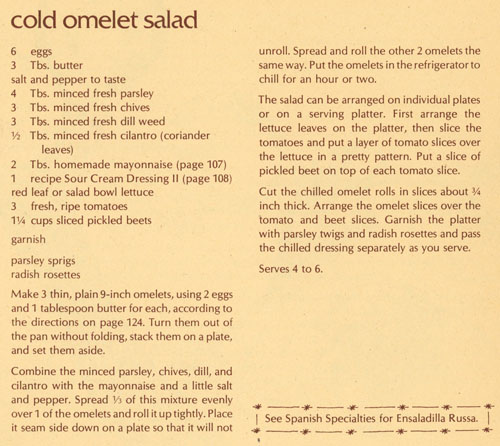
I know this omelet would be very good served over lettuce, tomatoes, and beets, with a sour cream dressing. But I can’t eat beets, and I decided to just make the omelet and cut it into pieces to use as high-protein snacks for us. To make the omelet, I consulted both this book and Julia Child’s Mastering the Art of French Cooking.
Cold Omelet Bites
- 2 eggs
- 1 tablespoon butter
- 1 tablespoon each chopped fresh herb: parsley, dill weed, cilantro
- 1 tablespoon chopped chives or green onion tops
- 1 tablespoon mayonnaise
- salt and pepper
Crack the 2 eggs into a bowl and mix with a whisk until the eggs are all mixed together. In a large skillet, on medium high heat, melt the butter until it starts to foam and brown. Turn the heat to medium, and pour in the eggs, tilting the pan to cover the bottom. Shake the pan to loosen the bottom. Lightly spread the uncooked egg areas around the top of the omelet so it all gets cooked. After about 30 seconds, the top of the omelet should look almost cooked. Loosen the edges of the omelet and carefully slide it onto a plate or work surface.
Combine the chopped herbs, chives, mayonnaise, and salt and pepper. Carefully spread over the surface of the omelet.
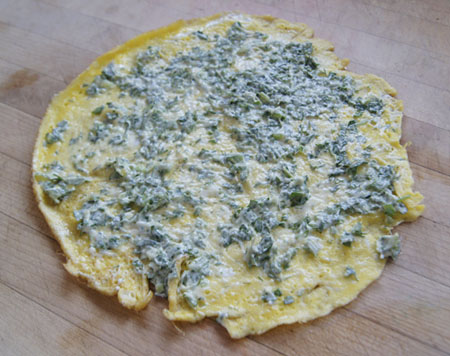 Carefully roll the omelet. Chill a couple hours, then cut into 3/4-inch pieces to serve as a snack.
Carefully roll the omelet. Chill a couple hours, then cut into 3/4-inch pieces to serve as a snack.
 We enjoyed these as a late-afternoon snack – they are delicious! We both liked them.
We enjoyed these as a late-afternoon snack – they are delicious! We both liked them.
Wow. When I first opened this book I thought I didn’t like any of the recipes and thought my conclusion would be “recycle”. But I found many, many recipes to try! Glad I found this book again.
We all get hungry again! Thank you, Anna Thomas.
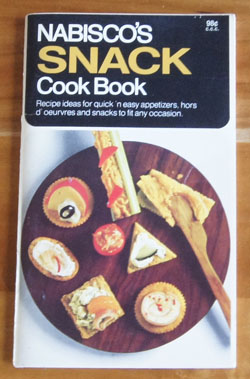 “Dear Homemaker,
“Dear Homemaker, Note the author of the introduction – Mary Ellen Baker, Home Economist. “Baker”? Really?
Note the author of the introduction – Mary Ellen Baker, Home Economist. “Baker”? Really? Here are some more pages from this book.
Here are some more pages from this book.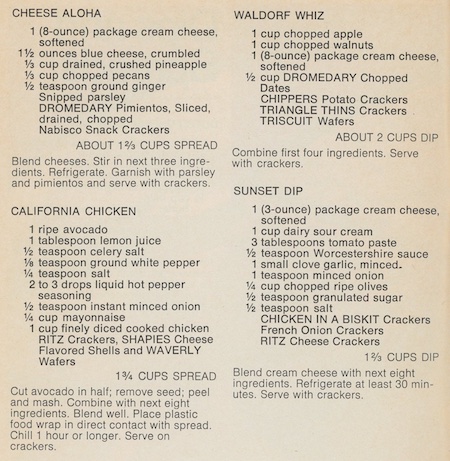
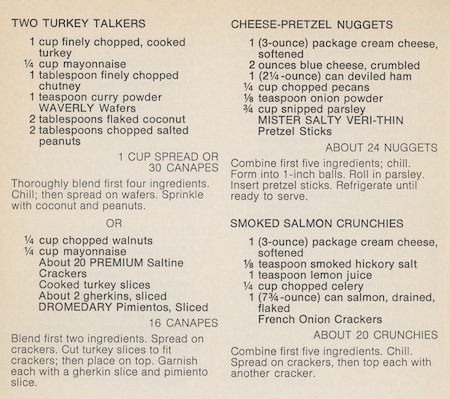
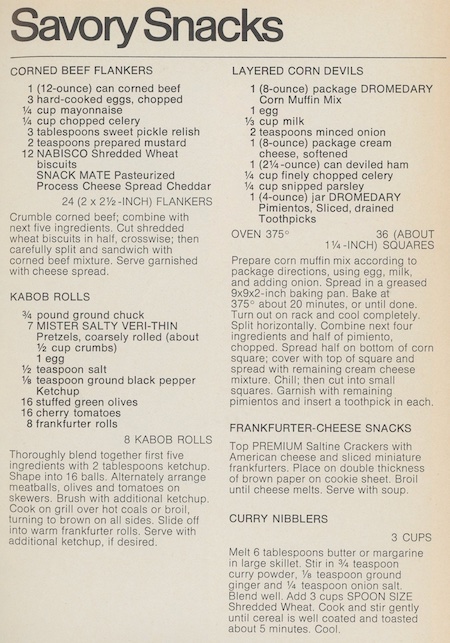 Sweet Snacks include Coconut Orange Dreams (stacks of three vanilla wafers layered with frosting – count out those 54 Nilla Wafers!) and Apricot Coconut Pixies.
Sweet Snacks include Coconut Orange Dreams (stacks of three vanilla wafers layered with frosting – count out those 54 Nilla Wafers!) and Apricot Coconut Pixies.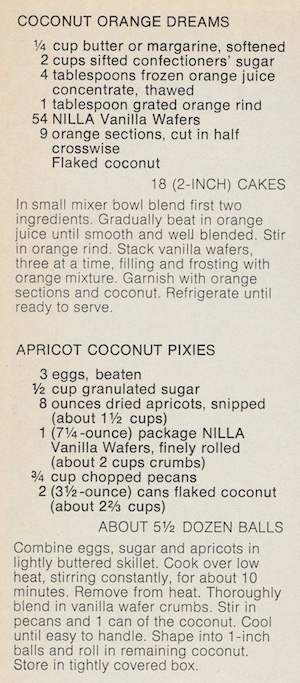
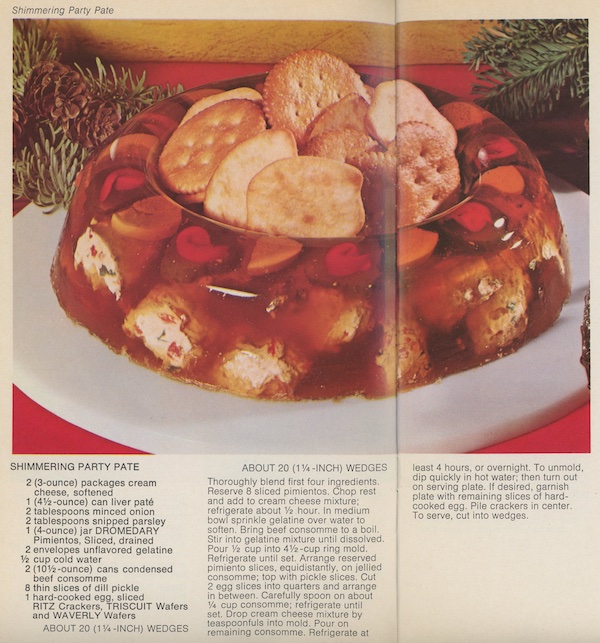 Cheese Neapolitan, pictured below, has 3 layers. The bottom layer is cream cheese and Parmesan cheese colored with tomato paste, the middle layer cream cheese and ricotta cheese, and the top layer cream cheese and Bel Paese cheese covered with parsley.
Cheese Neapolitan, pictured below, has 3 layers. The bottom layer is cream cheese and Parmesan cheese colored with tomato paste, the middle layer cream cheese and ricotta cheese, and the top layer cream cheese and Bel Paese cheese covered with parsley.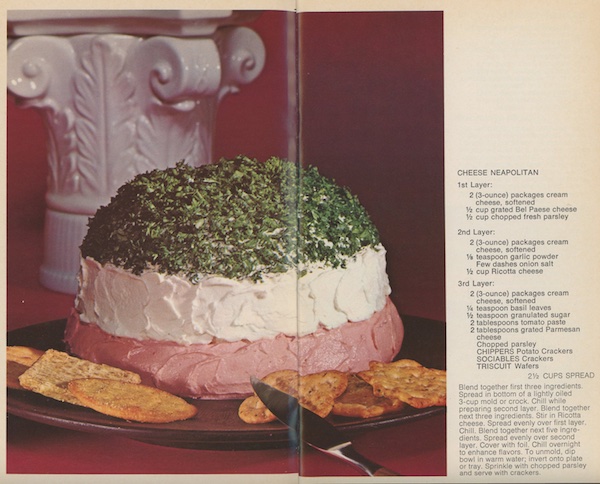 And one more, Curried Chicken Tidbits.
And one more, Curried Chicken Tidbits.
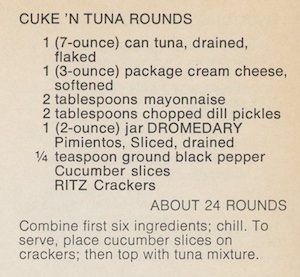


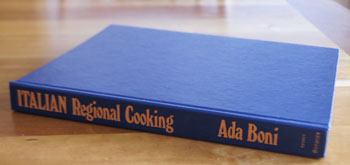 In my “250 Cookbooks” data base, I entered the publication date for this book as “1969?” Huh? Why the question mark. I went to the copyright page of Italian Regional Cooking and found “© MCMLXIX”. Oh, I see, and sure enough, when I read the whole field in my database, it reads “1969? MCMLXIX”. I had translated the Roman numeral to an Arabic numeral as “1969”, but didn’t check to see if I was correct. Turns out I was: search engines today quickly pulled up the conversion of MCMLXIX to 1969. Kids today no longer need to learn those rules in school, I guess.
In my “250 Cookbooks” data base, I entered the publication date for this book as “1969?” Huh? Why the question mark. I went to the copyright page of Italian Regional Cooking and found “© MCMLXIX”. Oh, I see, and sure enough, when I read the whole field in my database, it reads “1969? MCMLXIX”. I had translated the Roman numeral to an Arabic numeral as “1969”, but didn’t check to see if I was correct. Turns out I was: search engines today quickly pulled up the conversion of MCMLXIX to 1969. Kids today no longer need to learn those rules in school, I guess.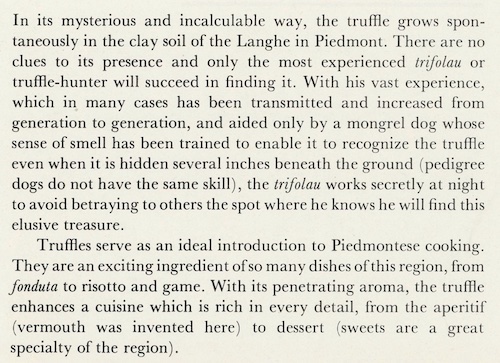
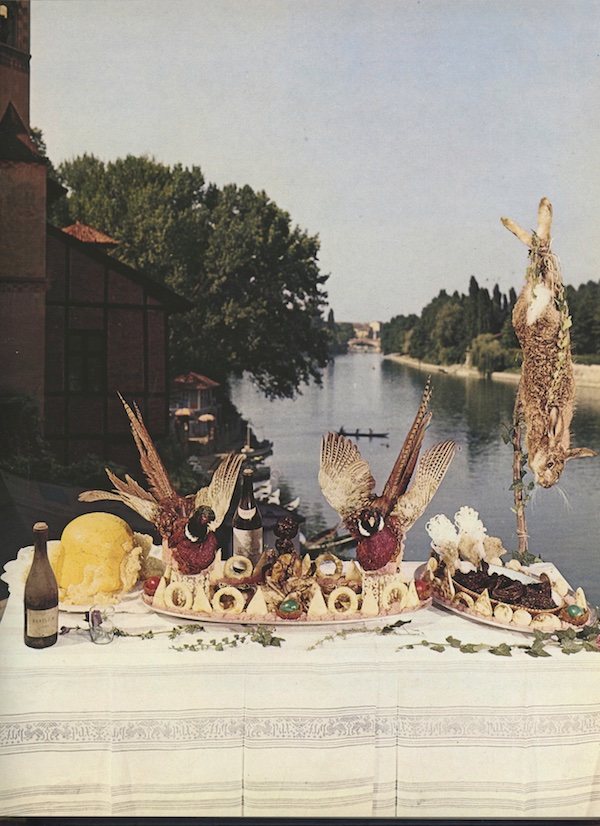
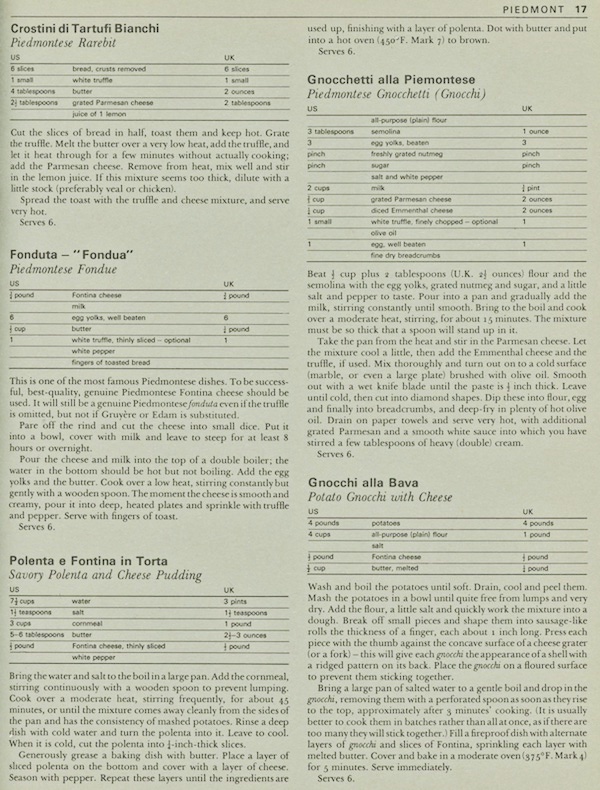 Here is another example of recipes in the Piedmont chapter. These ingredients aren’t as “Patty-friendly” as they are sweetbreads, oxtail, and frogs legs.
Here is another example of recipes in the Piedmont chapter. These ingredients aren’t as “Patty-friendly” as they are sweetbreads, oxtail, and frogs legs.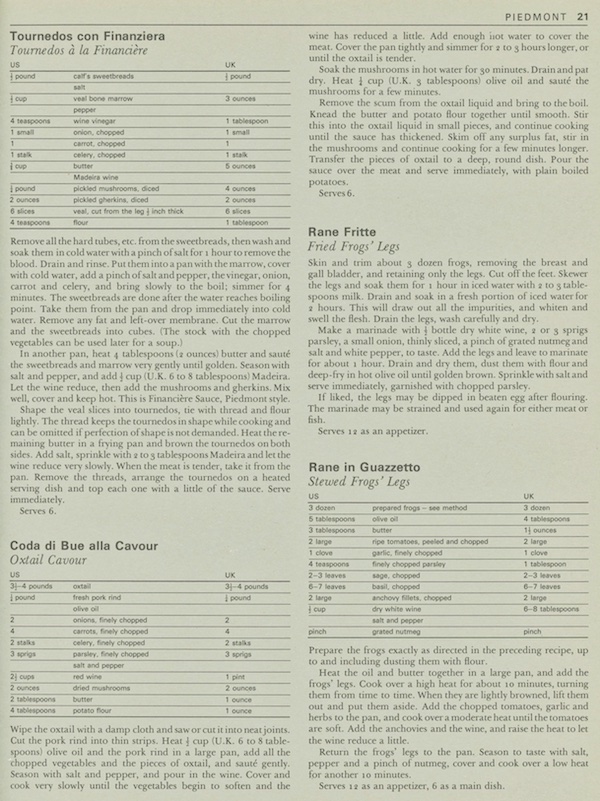
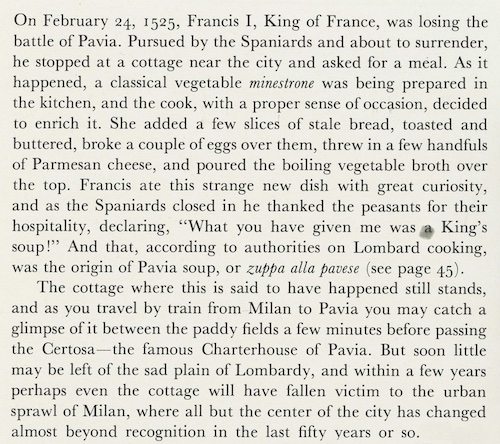
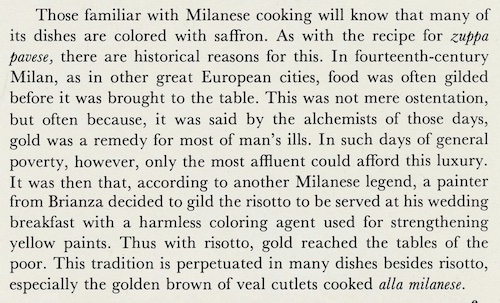

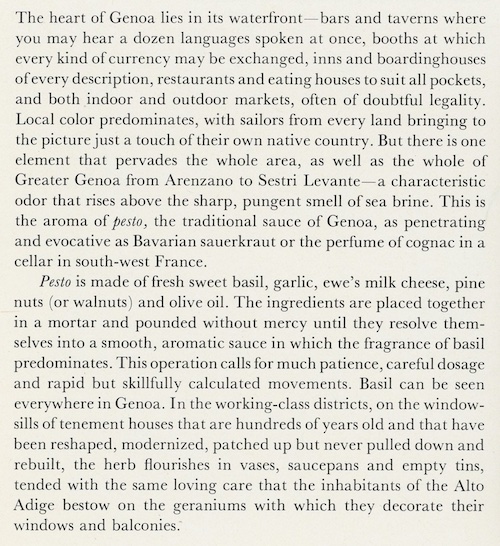 Here is a recipe for pesto:
Here is a recipe for pesto: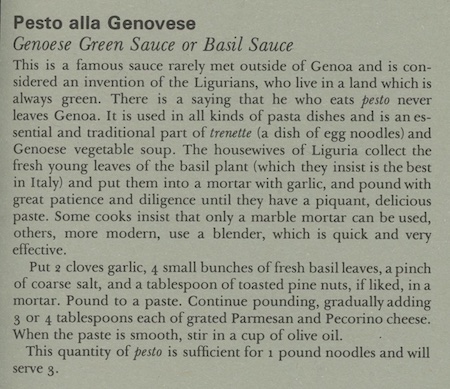
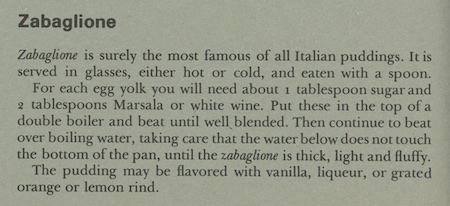 And so Ida Boni’s Italian Regional Cooking continues. I turn the pages and enjoy new stories, and more wonderful photos of the regions of Italy. It is a very good read.
And so Ida Boni’s Italian Regional Cooking continues. I turn the pages and enjoy new stories, and more wonderful photos of the regions of Italy. It is a very good read.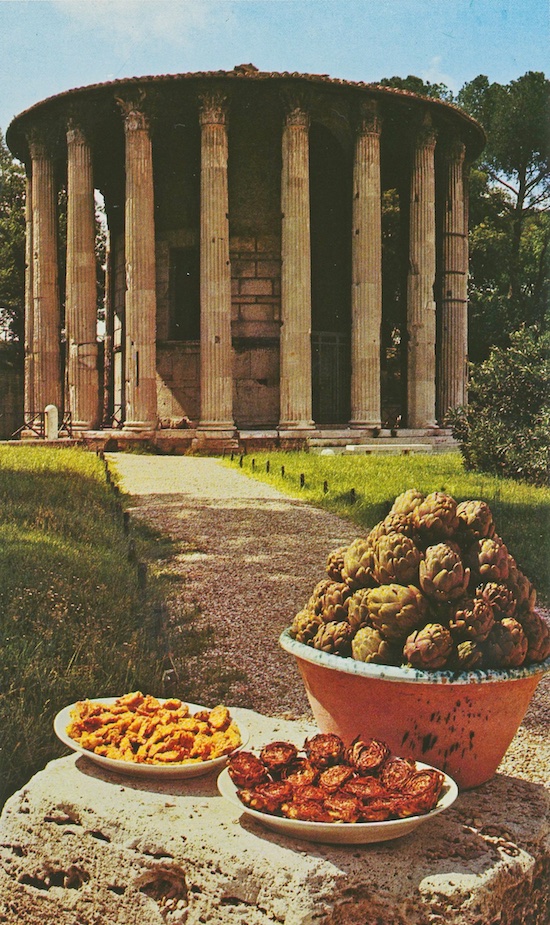
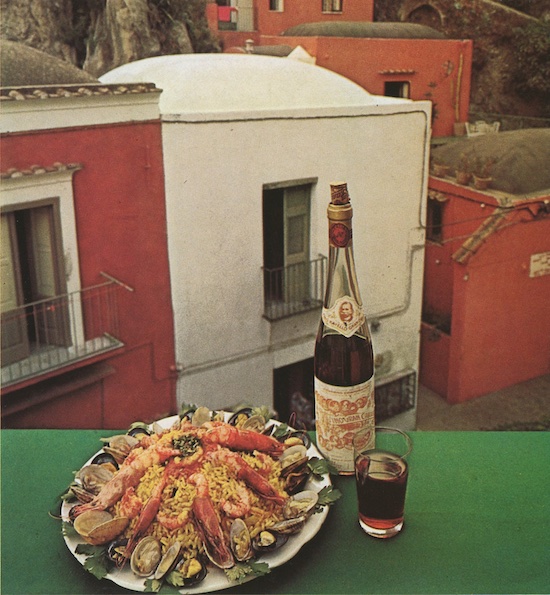
 This is a simple soup, just meat balls and noodles in broth. The only herb is parsley. As I was preparing it, I had to keep my hand from grabbing my usual Italian spices, like oregano, basil, and thyme. I also had to stop from adding vegetables to this soup, like carrots, celery, and onions. The only change I made was to halve the recipe to serve only two people, but keep the amount of ground beef the same (1/2 pound). Oh – at the last minute I added about 3 tablespoons tomato sauce. I’ll leave that as optional.
This is a simple soup, just meat balls and noodles in broth. The only herb is parsley. As I was preparing it, I had to keep my hand from grabbing my usual Italian spices, like oregano, basil, and thyme. I also had to stop from adding vegetables to this soup, like carrots, celery, and onions. The only change I made was to halve the recipe to serve only two people, but keep the amount of ground beef the same (1/2 pound). Oh – at the last minute I added about 3 tablespoons tomato sauce. I’ll leave that as optional. This was a very thick and very filling soup. It was good, but actually too much for the two of us. I might make it the same way again, or I’d use half the amount of meatballs and serve it as a first course. The flavor was good and I always like meat balls, so I wasn’t complaining!
This was a very thick and very filling soup. It was good, but actually too much for the two of us. I might make it the same way again, or I’d use half the amount of meatballs and serve it as a first course. The flavor was good and I always like meat balls, so I wasn’t complaining!
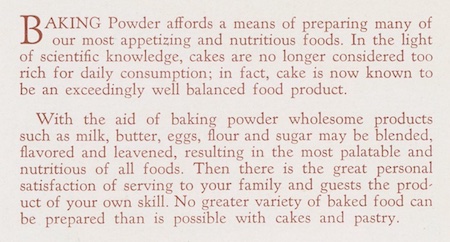


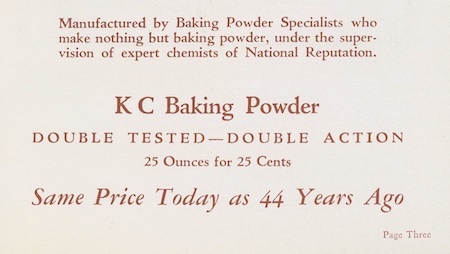 Jaques Manufacturing Company was given the Distinguished Service Award.
Jaques Manufacturing Company was given the Distinguished Service Award.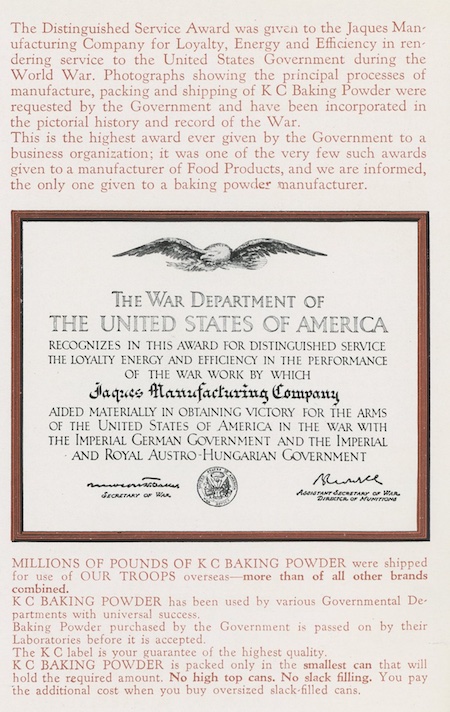
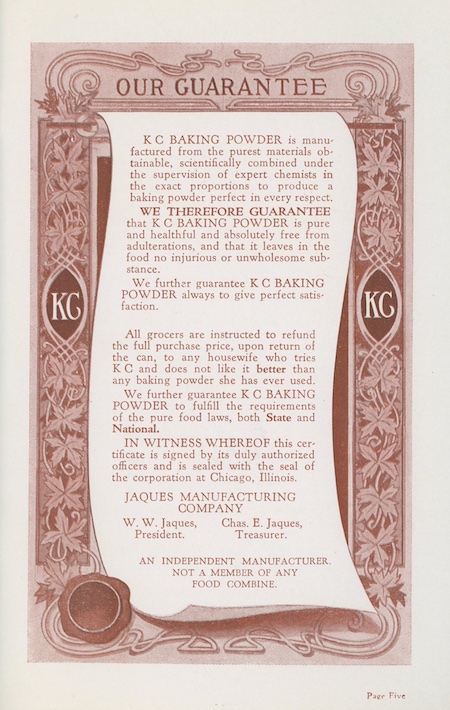

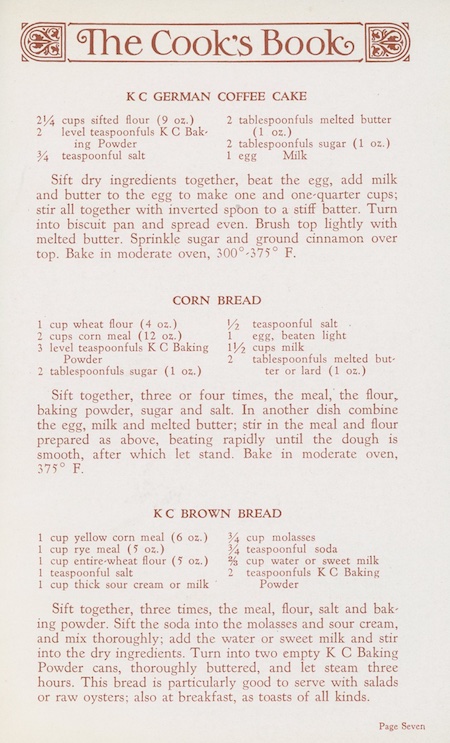
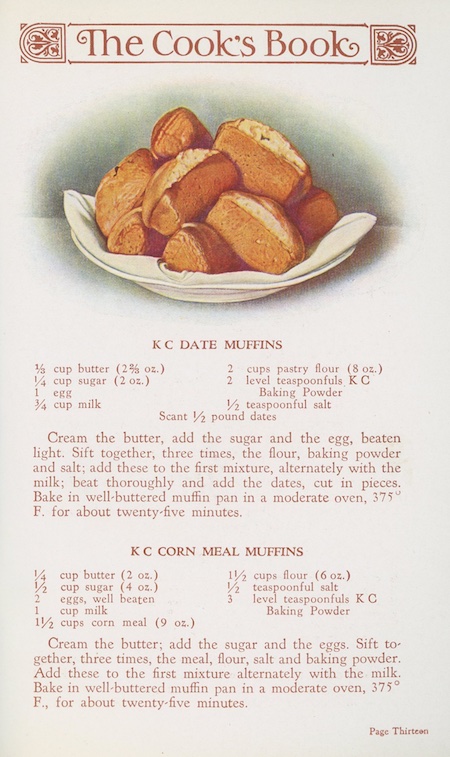
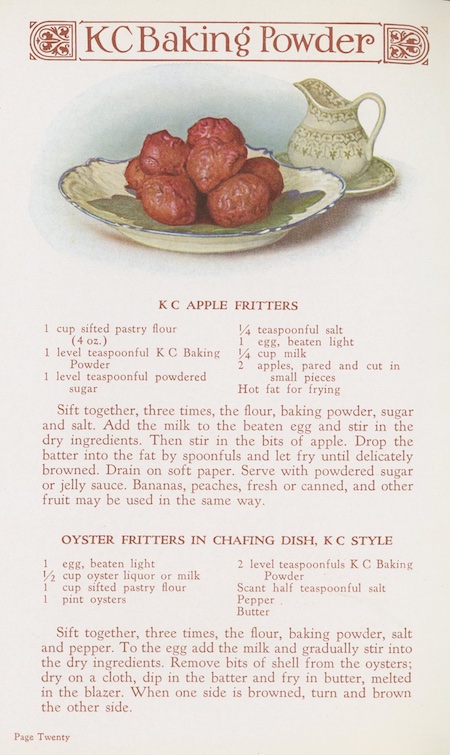
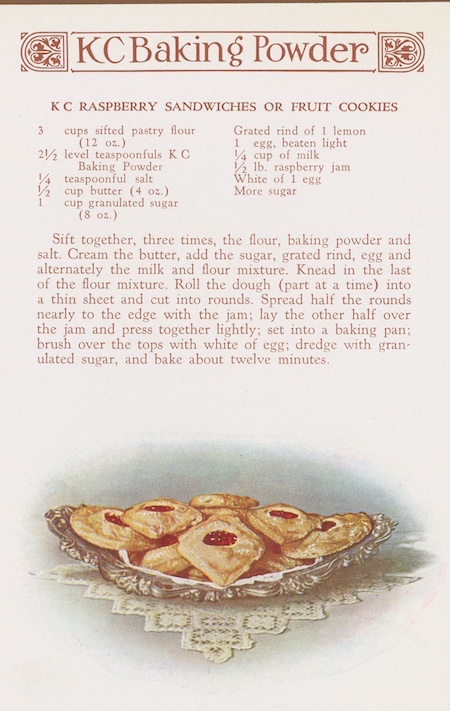
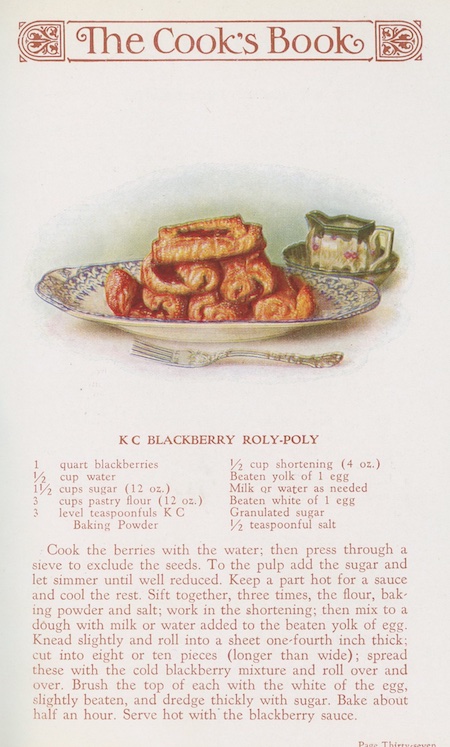

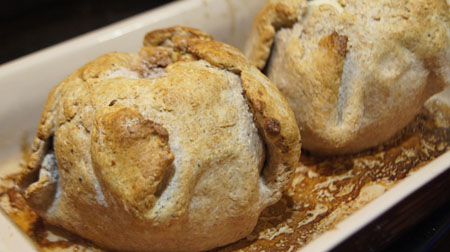
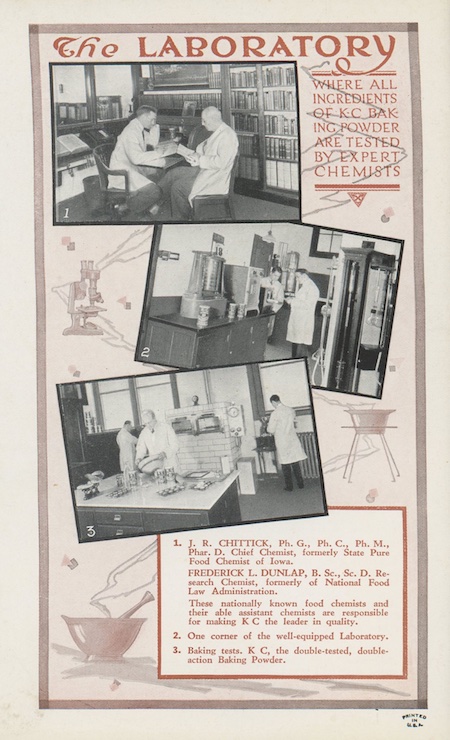
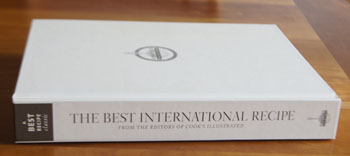
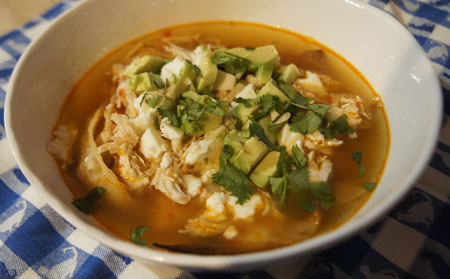
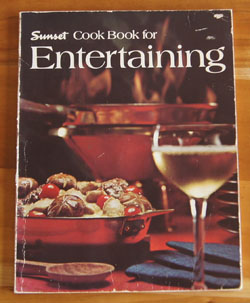 Entertaining, not my forté! I’m a bit too much of an introvert so I’ve never practiced it a lot. Sort of shy. And don’t get me wrong, I love cooking for people, but when it comes to presentation, I am lacking in ability and (desire). When company comes over (usually family), I want something delicious to serve and I don’t want diners getting full on appetizers. Save room for dessert!
Entertaining, not my forté! I’m a bit too much of an introvert so I’ve never practiced it a lot. Sort of shy. And don’t get me wrong, I love cooking for people, but when it comes to presentation, I am lacking in ability and (desire). When company comes over (usually family), I want something delicious to serve and I don’t want diners getting full on appetizers. Save room for dessert!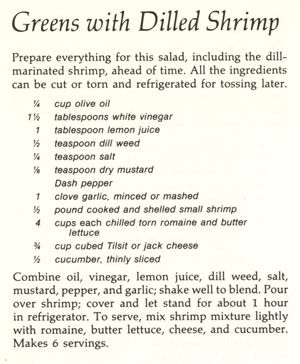 Distinctive Entrees begins: “The entree is the most important part of a meal, and the deciding factor in all the other things you serve before, with, or after.” Let’s see what they have. Most of the recipes sound good, like Beef Burgundy, Veal Veronique, and Giant Beef-Lobster Kebabs. But what I like about this chapter’s recipes is that almost each one requires very little last minute prep from the cook: “The foremost consideration in the selection of these entrees has been whether they are practical for entertaining. Nearly all of these dishes may be made partially or entirely ahead; many may be frozen.” A few of the recipes look very involved but I might find them fun: Danish Chicken and Meatblls au Gratin, for instance, calls for veal meatballs, chicken breasts, and sweetbreads, all cooked and assembled in a rich sauce ahead of time and simply heated briefly just before serving. “Pheasant-in-a-Bag” is an example of one of the more unusual dishes in this chapter. I note a recipe for Turkey Tetrazzini, one I’ve come across several times in cookbooks of this era, and one that I have explored before (
Distinctive Entrees begins: “The entree is the most important part of a meal, and the deciding factor in all the other things you serve before, with, or after.” Let’s see what they have. Most of the recipes sound good, like Beef Burgundy, Veal Veronique, and Giant Beef-Lobster Kebabs. But what I like about this chapter’s recipes is that almost each one requires very little last minute prep from the cook: “The foremost consideration in the selection of these entrees has been whether they are practical for entertaining. Nearly all of these dishes may be made partially or entirely ahead; many may be frozen.” A few of the recipes look very involved but I might find them fun: Danish Chicken and Meatblls au Gratin, for instance, calls for veal meatballs, chicken breasts, and sweetbreads, all cooked and assembled in a rich sauce ahead of time and simply heated briefly just before serving. “Pheasant-in-a-Bag” is an example of one of the more unusual dishes in this chapter. I note a recipe for Turkey Tetrazzini, one I’ve come across several times in cookbooks of this era, and one that I have explored before (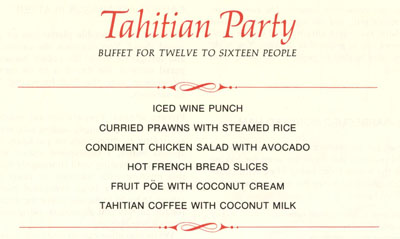

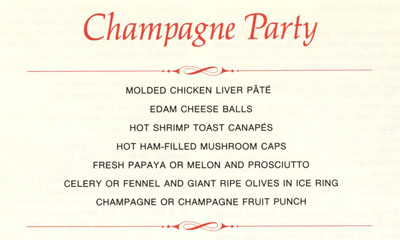
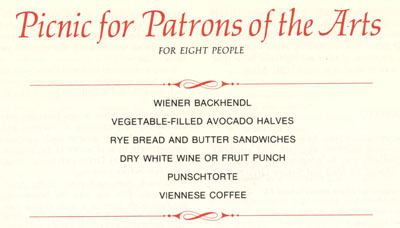
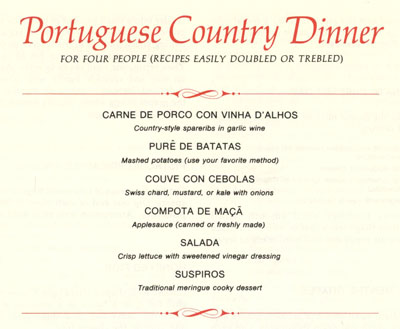
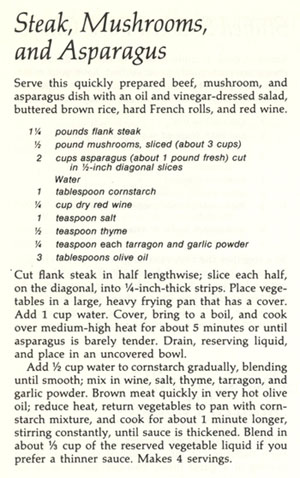 I’ve adjusted the herbs and thickening agent (cornstarch) up a bit to our own tastes, and made twice the amount of sauce.
I’ve adjusted the herbs and thickening agent (cornstarch) up a bit to our own tastes, and made twice the amount of sauce.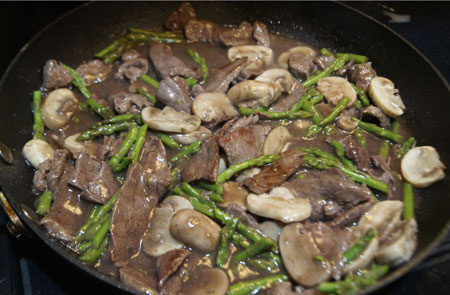 I liked this a lot, but all I got was a “pretty good” from my hubby. He is used to this type of meal with a lot of soy sauce; I, on the other hand, appreciated the subtle red wine sauce. I am not an asparagus fan, but the asparagus I found at the store was very small and young, and cut into the small pieces, I found it to be quite good.
I liked this a lot, but all I got was a “pretty good” from my hubby. He is used to this type of meal with a lot of soy sauce; I, on the other hand, appreciated the subtle red wine sauce. I am not an asparagus fan, but the asparagus I found at the store was very small and young, and cut into the small pieces, I found it to be quite good.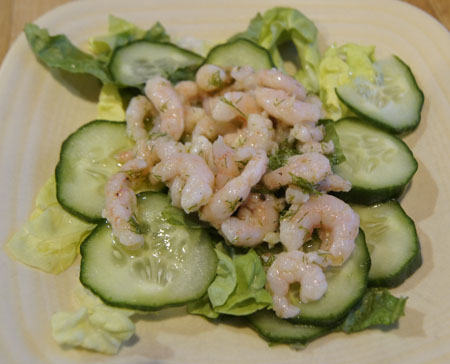 I have decided to keep this cookbook. Online, I find that it is still for sale (used) for several dollars a copy. And I found one favorable review – so I know I am not alone in appreciating this book. I have always liked the type of Southwestern cuisine that Sunset magazine promotes. Another “found” cookbook, right on my shelves!
I have decided to keep this cookbook. Online, I find that it is still for sale (used) for several dollars a copy. And I found one favorable review – so I know I am not alone in appreciating this book. I have always liked the type of Southwestern cuisine that Sunset magazine promotes. Another “found” cookbook, right on my shelves! The Vegetarian Epicure Book Two is pleasantly illustrated and is printed on solid, rough paper – such a good tactile touch. Anna Thomas is a friendly author, and the recipes straightforward. I bought this cookbook for myself, and I’m sure that I leafed through it at the store and was intrigued by the look of the book and the variety of recipes.
The Vegetarian Epicure Book Two is pleasantly illustrated and is printed on solid, rough paper – such a good tactile touch. Anna Thomas is a friendly author, and the recipes straightforward. I bought this cookbook for myself, and I’m sure that I leafed through it at the store and was intrigued by the look of the book and the variety of recipes.
 Carefully roll the omelet. Chill a couple hours, then cut into 3/4-inch pieces to serve as a snack.
Carefully roll the omelet. Chill a couple hours, then cut into 3/4-inch pieces to serve as a snack. We enjoyed these as a late-afternoon snack – they are delicious! We both liked them.
We enjoyed these as a late-afternoon snack – they are delicious! We both liked them.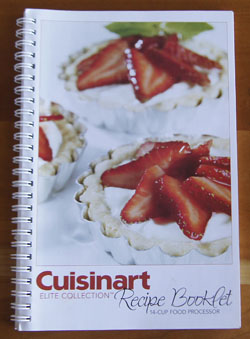 My current food processor is the 14-cup Elite (I covered my old one in
My current food processor is the 14-cup Elite (I covered my old one in 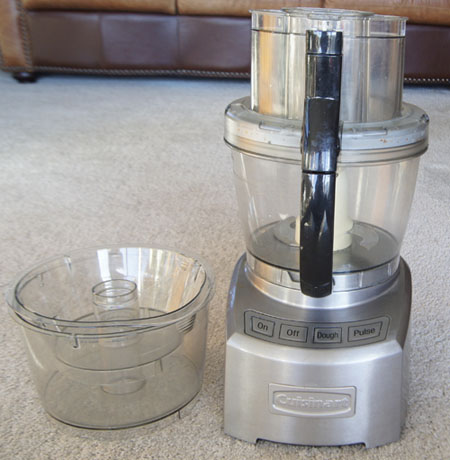 I page through the recipes in this booklet. Yum, I want to make about every-other recipe! Just like my
I page through the recipes in this booklet. Yum, I want to make about every-other recipe! Just like my 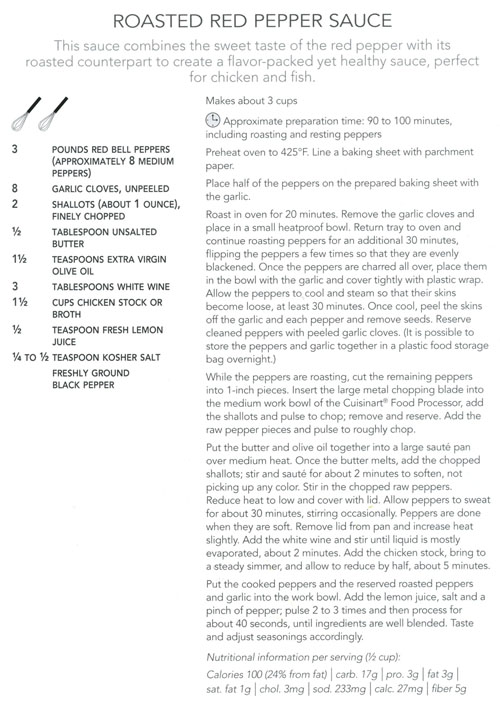 I decided to make just a half recipe for the two of us.
I decided to make just a half recipe for the two of us.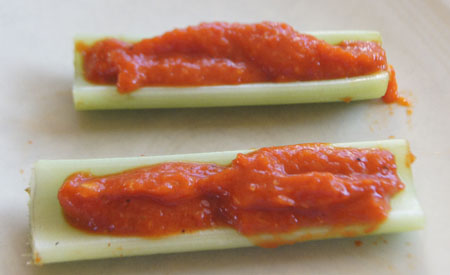
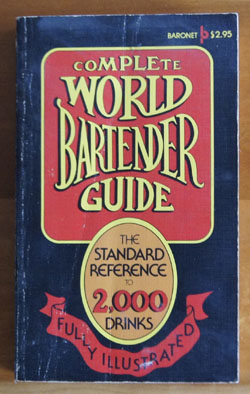 Why did I buy this book? We rarely make “cocktails”. Guess I had a moment when I wanted to act “civilized”, like my parents’ generation, where fancy cocktails were routine at social get-togethers. Whatever the cause, I bought the book. And the result was Complete World Bartender Guide sat my shelf, gathering dust.
Why did I buy this book? We rarely make “cocktails”. Guess I had a moment when I wanted to act “civilized”, like my parents’ generation, where fancy cocktails were routine at social get-togethers. Whatever the cause, I bought the book. And the result was Complete World Bartender Guide sat my shelf, gathering dust.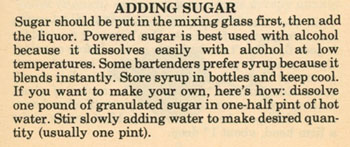 Actually, this page might be useful to me in the future. But I also have another recipe source for simple syrups in my comprehensive reference book,
Actually, this page might be useful to me in the future. But I also have another recipe source for simple syrups in my comprehensive reference book, 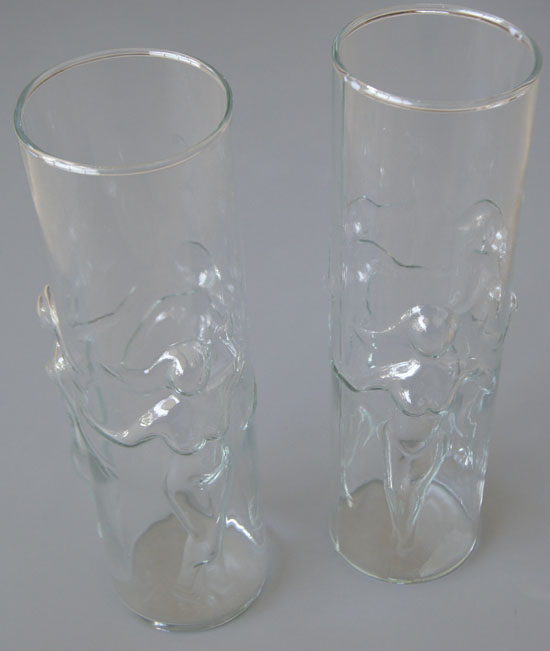 My uncle served in World War II and was for a time a bartender. Spending an evening with my aunt and uncle was always entertaining! We have the best memories of our visits to their home in Southern California.
My uncle served in World War II and was for a time a bartender. Spending an evening with my aunt and uncle was always entertaining! We have the best memories of our visits to their home in Southern California.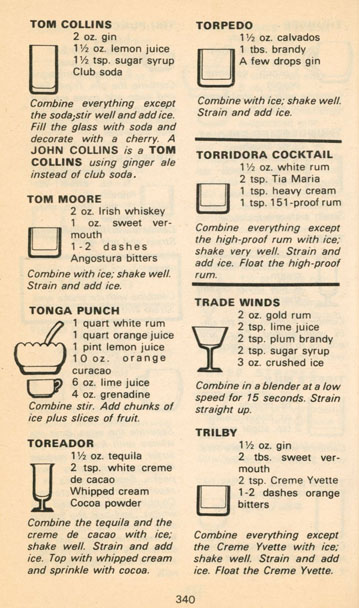 Collins mix is masde with simple syrup, lemon juice, and soda water. I could have used my Lemon Simple Syrup to make a Tom Collins. I should have looked on my own bookshelves for answers long ago.
Collins mix is masde with simple syrup, lemon juice, and soda water. I could have used my Lemon Simple Syrup to make a Tom Collins. I should have looked on my own bookshelves for answers long ago.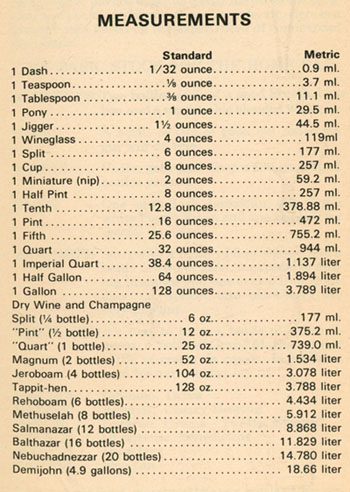 Bar glasses – they don’t have my “Skip and Go Nakeds!”
Bar glasses – they don’t have my “Skip and Go Nakeds!”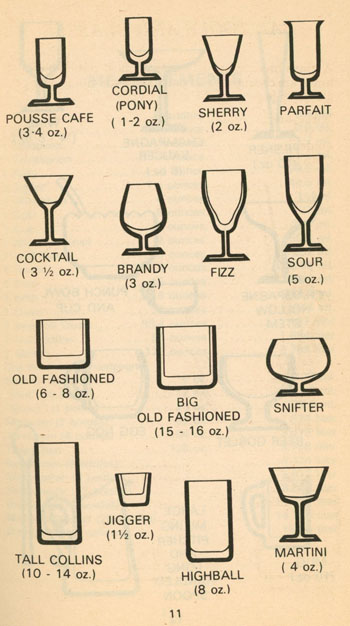
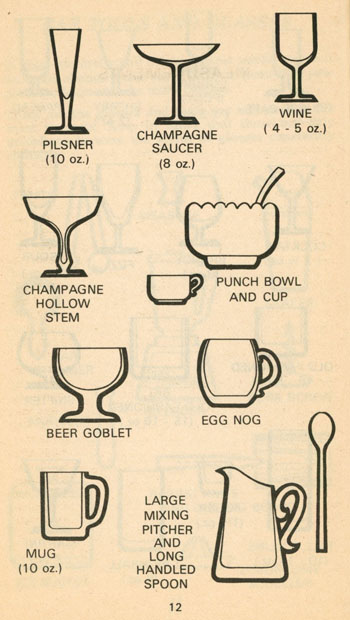
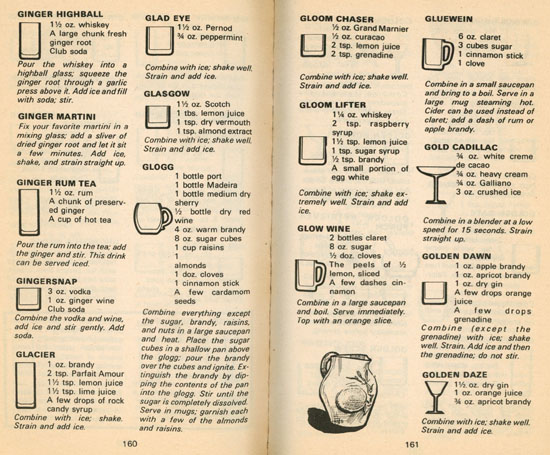 What am I going to make for this blog? We don’t really drink cocktails, especially this time of year, largely because we are trying to cut calories. There are a few low-calorie alcoholic drinks . . . and at the very back, a few non-alcoholic drinks. That suits the bill for us this January as we recover from the excesses of last year. I’ll try one of the tomato cocktails:
What am I going to make for this blog? We don’t really drink cocktails, especially this time of year, largely because we are trying to cut calories. There are a few low-calorie alcoholic drinks . . . and at the very back, a few non-alcoholic drinks. That suits the bill for us this January as we recover from the excesses of last year. I’ll try one of the tomato cocktails: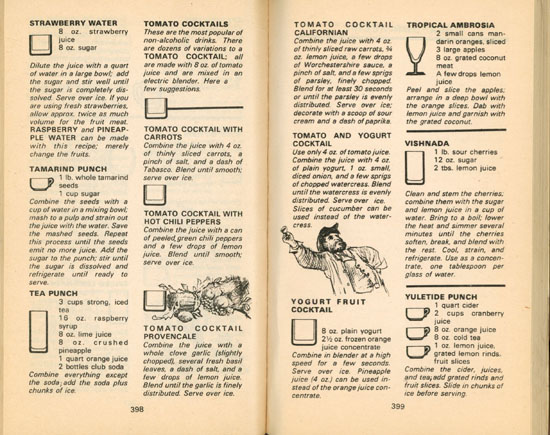 I will make the tomato cocktail with carrots. I keep small cans of tomato sauce in my pantry because I often use them when making marinara sauce. I took out a carrot to use, and wondered how much it weighed. Less than one ounce! This was an averaged-sized carrot. Heavens, I am supposed to use 4 ounces of carrots! That seemed way too much for me, so I only used that one 1-ounce carrot.
I will make the tomato cocktail with carrots. I keep small cans of tomato sauce in my pantry because I often use them when making marinara sauce. I took out a carrot to use, and wondered how much it weighed. Less than one ounce! This was an averaged-sized carrot. Heavens, I am supposed to use 4 ounces of carrots! That seemed way too much for me, so I only used that one 1-ounce carrot.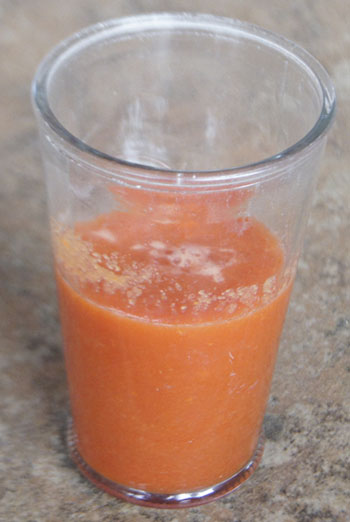 Sure, this was good. The carrots were still a bit crunchy after a minute of blending, though. I didn’t mind, but you might use carrot juice instead, or a juicer.
Sure, this was good. The carrots were still a bit crunchy after a minute of blending, though. I didn’t mind, but you might use carrot juice instead, or a juicer.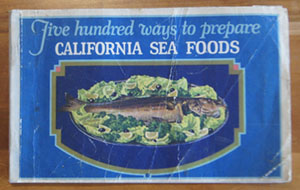 The sheer abundance of fish covered in this book is amazing – about 60 species! The table below shows the types, poundage, and total amount of fish produced in 1933 in California.
The sheer abundance of fish covered in this book is amazing – about 60 species! The table below shows the types, poundage, and total amount of fish produced in 1933 in California.
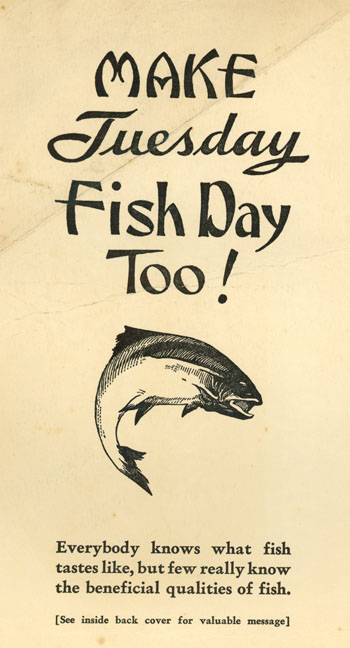 This takes me back: when I was in elementary school, we always had fish on Friday – a tuna fish sandwich in my lunchbox. Fish on Friday was a Catholic practice, and although we were not Catholic, we nevertheless had those tuna sandwiches. Curious about this tradition, I found several interesting articles. In
This takes me back: when I was in elementary school, we always had fish on Friday – a tuna fish sandwich in my lunchbox. Fish on Friday was a Catholic practice, and although we were not Catholic, we nevertheless had those tuna sandwiches. Curious about this tradition, I found several interesting articles. In 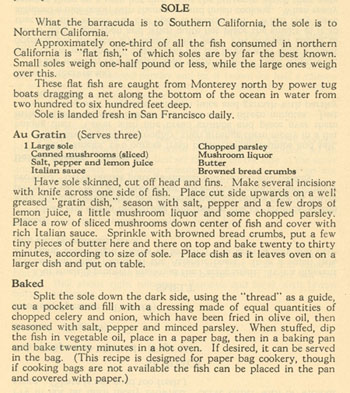 That’s not the only page of recipes for sole – they go on for four more pages!
That’s not the only page of recipes for sole – they go on for four more pages!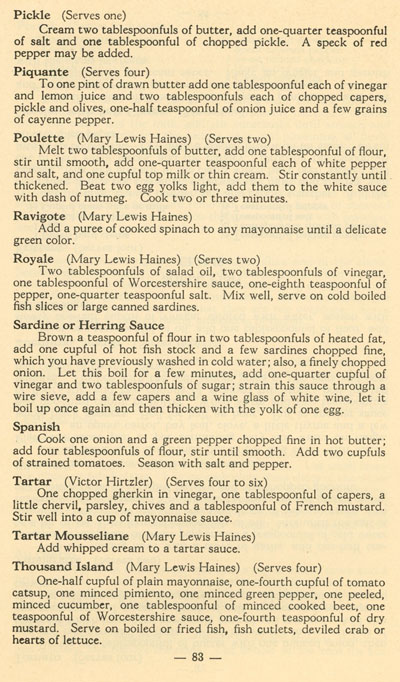 The book ends with “Reasons Why you should make Tuesday Fish Day too!” touts fish as “one of the most heathful and nourishing foods known to science”.
The book ends with “Reasons Why you should make Tuesday Fish Day too!” touts fish as “one of the most heathful and nourishing foods known to science”.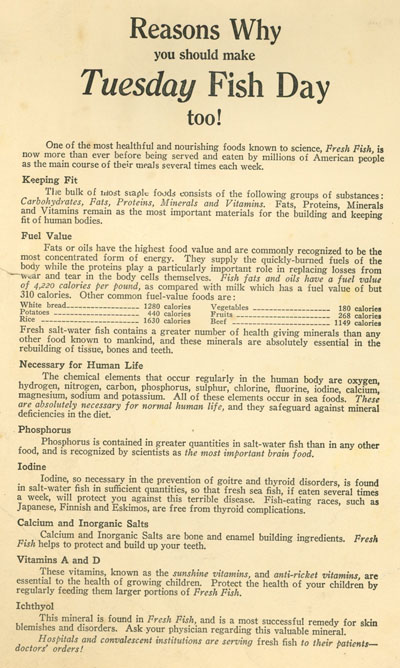
 This tartar sauce was amazingly good. Fresh and zingy. I served it with salmon along with wedges of lemon. I usually make “tartar sauce” by mixing together mayo or yogurt with a little pickle relish and tarragon. But this one is a big step up in flavor, and still very easy to make. I am sure I’ll use it a lot in the future!
This tartar sauce was amazingly good. Fresh and zingy. I served it with salmon along with wedges of lemon. I usually make “tartar sauce” by mixing together mayo or yogurt with a little pickle relish and tarragon. But this one is a big step up in flavor, and still very easy to make. I am sure I’ll use it a lot in the future!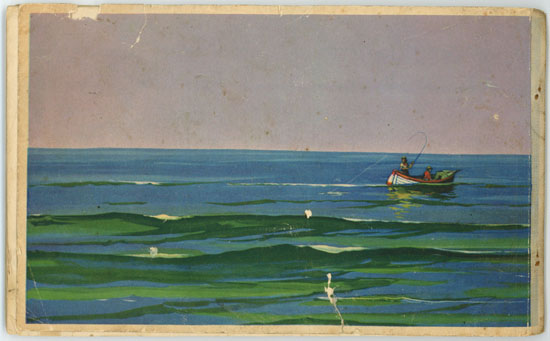

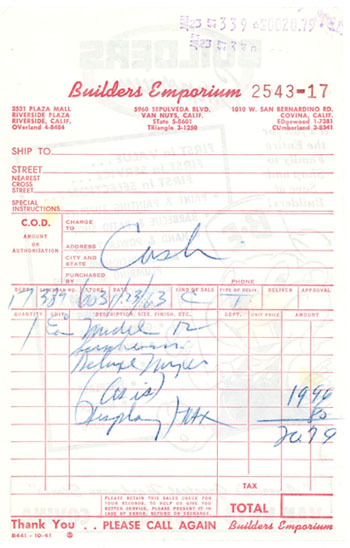
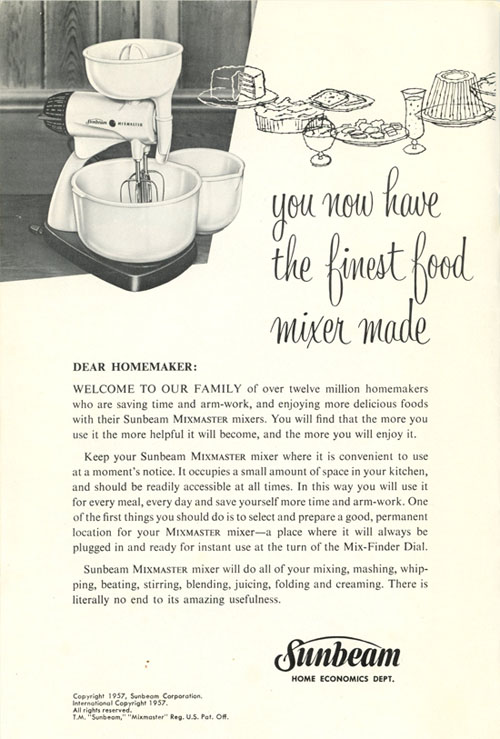
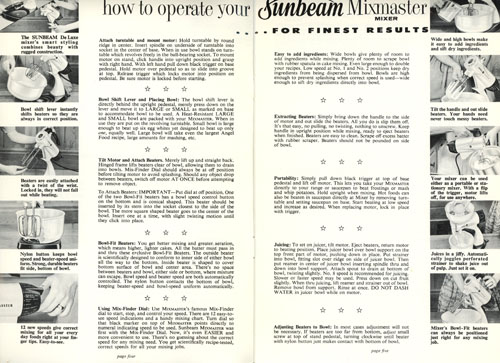 Basic instructions for making cakes. I like the vintage black-and-white photos:
Basic instructions for making cakes. I like the vintage black-and-white photos: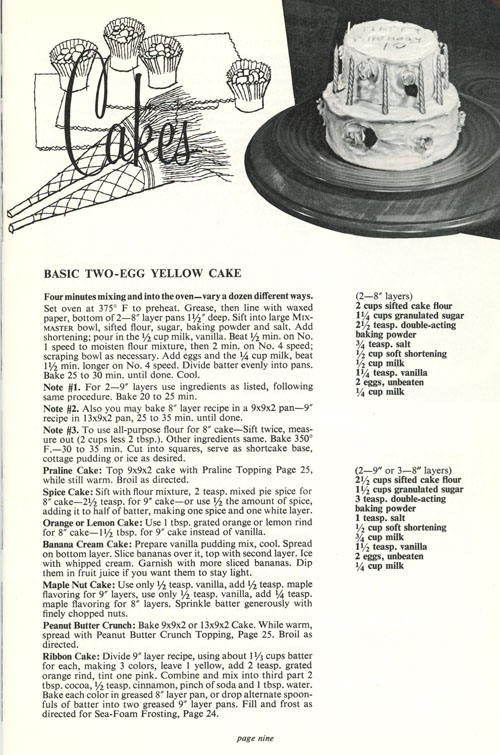 Loaf cakes:
Loaf cakes:
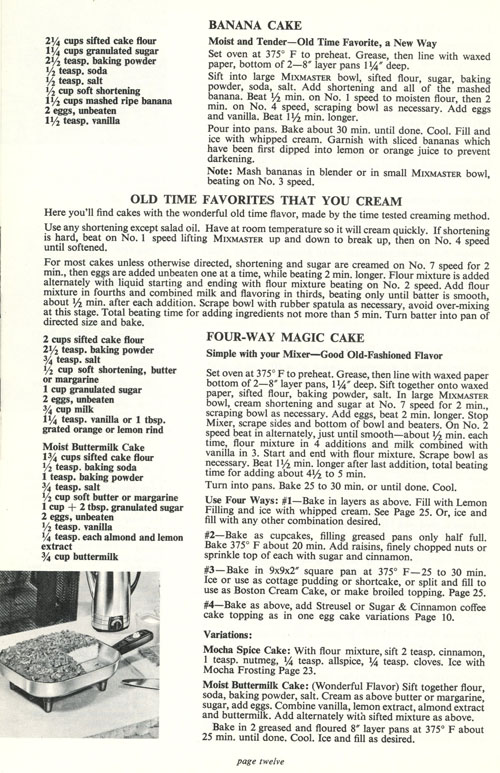
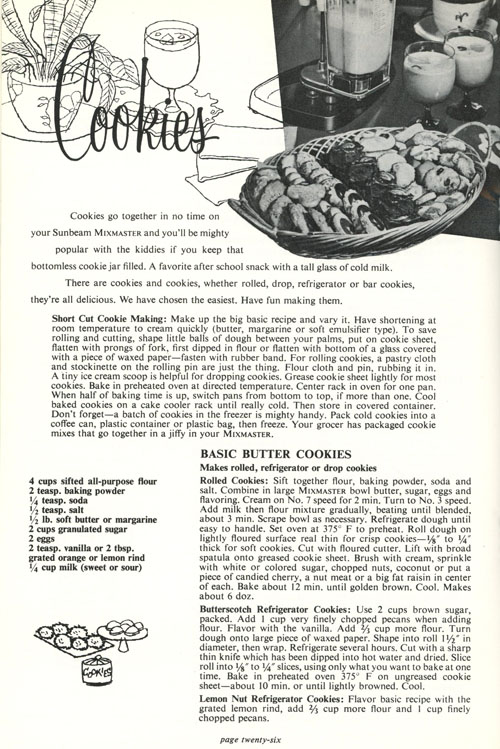 I like the following page for the kitchen counter photo at the top of the page. And the text below suggests to use a Sunbeam electric fry pan for the pan cakes, a waffle iron for the waffles, and a blender as well as the mixmaster for the meat loaf.
I like the following page for the kitchen counter photo at the top of the page. And the text below suggests to use a Sunbeam electric fry pan for the pan cakes, a waffle iron for the waffles, and a blender as well as the mixmaster for the meat loaf.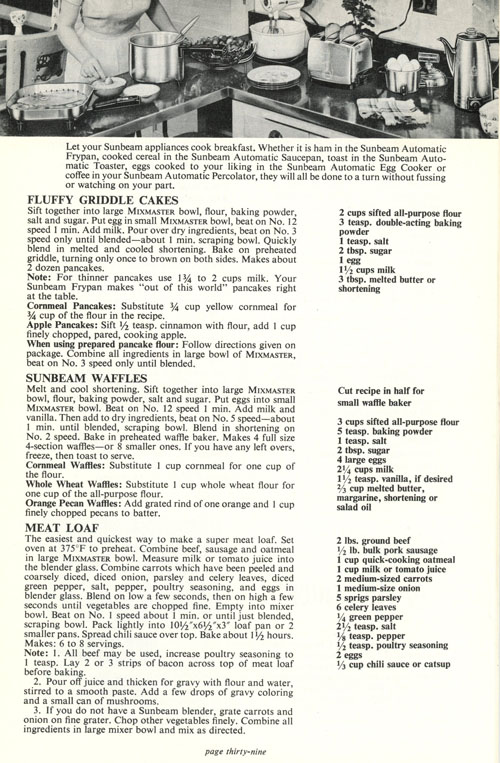 Finally, the back cover, showing all the available Sunbeam appliances in 1957. I made a similar scan of the back cover of
Finally, the back cover, showing all the available Sunbeam appliances in 1957. I made a similar scan of the back cover of 
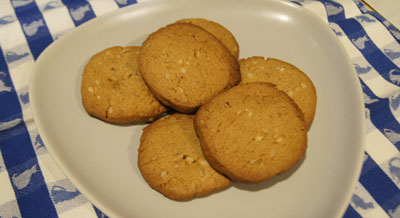 These are tasty. I cooked them too long because I didn’t read my directions! I thought it was “12 minutes”, but it was “10 minutes”. I checked them at 12 and thought they weren’t brown enough, so I gave them another 2 minutes and they actually tasted burned. 10 minutes! They will not look real brown but will be done!
These are tasty. I cooked them too long because I didn’t read my directions! I thought it was “12 minutes”, but it was “10 minutes”. I checked them at 12 and thought they weren’t brown enough, so I gave them another 2 minutes and they actually tasted burned. 10 minutes! They will not look real brown but will be done!